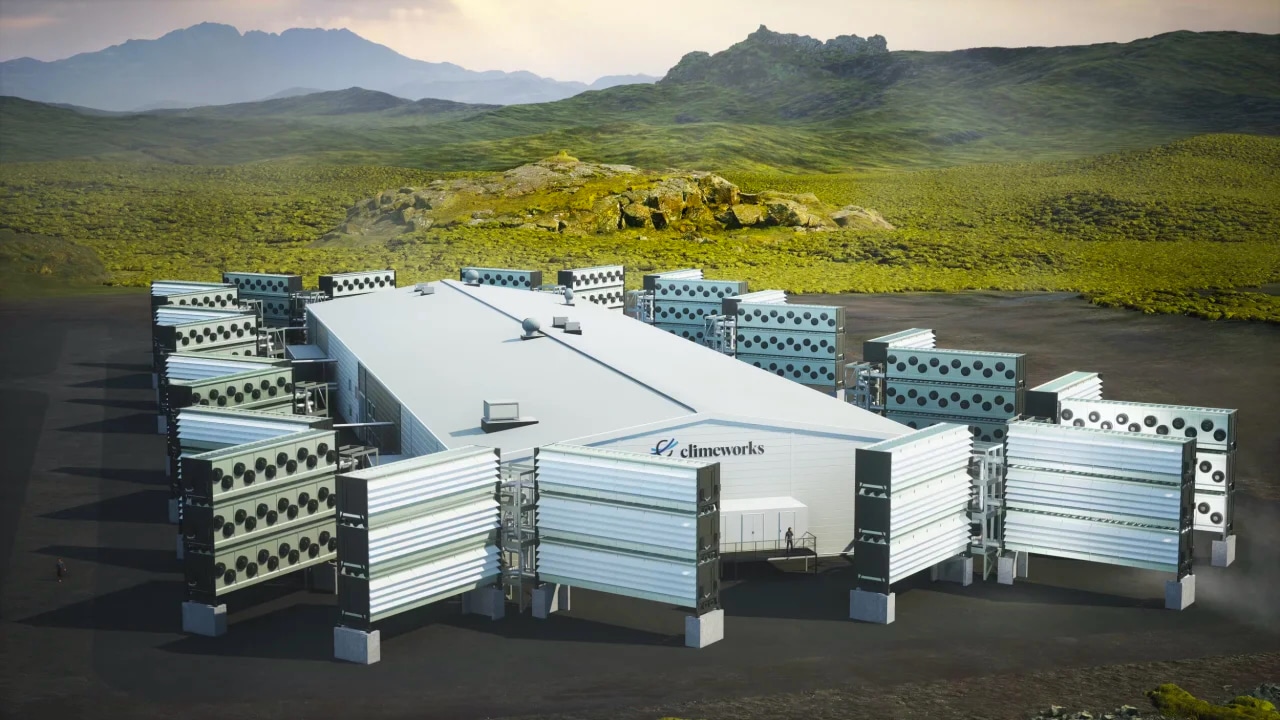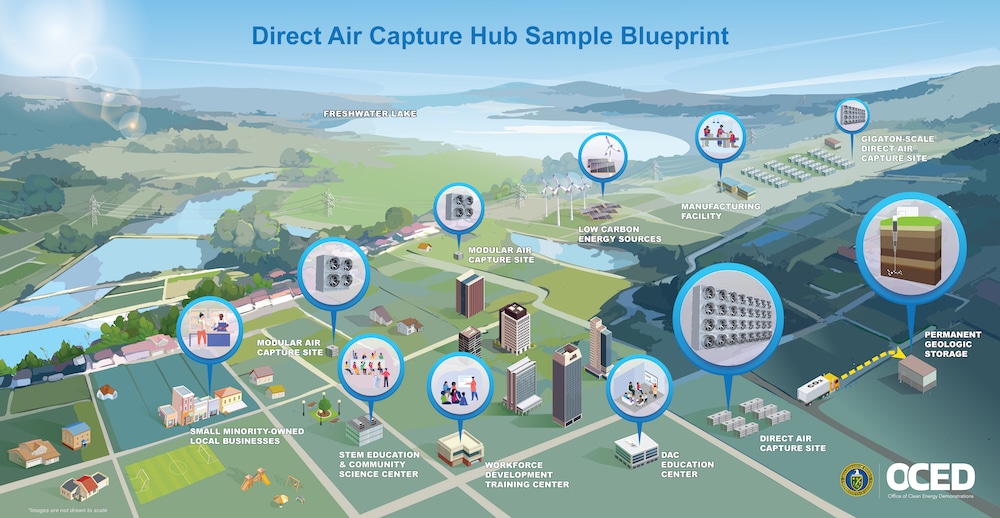Direct Air Capture: A Solution, or More of a Problem?

 Why you can trust us
Why you can trust us
Founded in 2005 as an Ohio-based environmental newspaper, EcoWatch is a digital platform dedicated to publishing quality, science-based content on environmental issues, causes, and solutions.
The U.S. Department of Energy (DOE) recently announced $1.2-billion to finance two direct air capture projects to be built in Texas and Louisiana. These two sites, when fully operational, aim to pull about two million metric tons of carbon dioxide from the air, or the equivalent of the annual emissions of 70 airplanes, 450,000 gas cars or 220,000 homes. This money is cut out from the overall Regional Direct Air Capture (DAC) Hubs program, for which $3.5-billion overall has been allocated. The DOE has lofty goals for these hubs, as the air capture facilities are just one part of a larger community filled with small minority-owned businesses, a science center and other things.

But what is direct air capture? DAC is a nascent and very expensive technology that essentially uses fans to draw the air into a facility, where chemicals and heat processing remove the carbon dioxide. The CO2 is then either used to create other products, like concrete, or is sequestered underground. Urgent questions still remain about whether this tech is worth the cost, and whether or not it will meaningfully reduce the amount of CO2 in the air, or whether sequestration has the potential to be an environmental disaster on its own.
DAC sites are already in operation around the world. In 2021, the Orca plant in Iceland became the first independently audited facility to store carbon underground for paying customers. Orca aims to pull out 4,000 tons of CO2 from the air each year. There will soon be another, even bigger facility in Iceland which will be able to pull 36,000 tonnes of carbon from the air. It is currently the largest operating plant in the world. Operated by Climeworks, the plants in Iceland build on the technology from the first DAC site that was opened in Switzerland in 2017.

Another small facility in Denver is operational, but has nowhere to store the CO2 that it cleans. As reported in April of this year, it is simply releasing the gas as a proof of concept.
Announced with much fanfare, Project Bison in Wyoming intends to remove five million metric tons of CO2 every year. But the project has run into obstacles that might plague other DAC facilities, including a delay on getting a permit to store the carbon underground, which is being held up by the state Department of Environmental Quality. They have also run into delays with powering the plant, with the company now wanting to power the facility with renewable energy.
There are plenty of other plants in the planning stages in addition to the ones in Texas and Louisiana. And companies like Microsoft are purchasing carbon offset credits from these facilities. Microsoft has struck a deal with Project Bison to purchase carbon removal credits from CarbonCapture, the company running the plant, as part of its overall goal to become “carbon negative” by 2030. CleanTechnica found that in the Texas area of Corpus Christi where the DAC hub will be built, there are plenty of polluters that might be interested in purchasing carbon credits from the hub to offset their emissions.
But many are asking if direct air capture — and other carbon capture technologies – is worth all the effort and expense. For example, a company called 1PointFive says that part of its carbon capture technology will be used to force out oil from deep underground. This aligns with a study from September of 2022 by the Researchers for the Institute for Energy Economics and Financial Analysis (IEEFA), which found that “captured carbon has mostly been used for enhanced oil recovery” and that nearly three quarters of CO2 that is captured is injected back into the ground to push more oil to the surface.
There is also the long-term question of the underground storage of the CO2. The report notes that “the trapped CO2 underground needs monitoring for centuries to ensure it does not come back to the atmosphere. Leakages and fugitive emissions in the long term are serious risks. It is impossible to guarantee that the stored CO2 will stay underground and not leak into the atmosphere” and the authors found that “the history of carbon capture technology is full of failed or underperformed projects.”
On top of these findings, there is the question of environmental justice. E&E News has reported on the risks to minority communities that underground storage poses. In February 2020, a Denbury Gulf Coast carbon dioxide pipeline ruptured and sent 40 people to the hospital in the small town of Satartia, Mississippi. It’s one example of the risks of CO2 storage, and in the case of direct air capture, companies do plan to store the gas far underground.
The Center for International Environmental Law has posted that “the ability of CCS to provide meaningful emissions reductions in the next decade is extremely low, while its cost would be extremely high.” And a letter from CIEL in 2021 directed to U.S. government leaders, signed by hundreds of signatories, summarized that “we don’t need to fix fossil fuels, we need to ditch them. To avoid catastrophic climate change, we need to deploy resources to replace the fossil fuel industry, not prop it up.”
So why are companies putting all this effort in direct air capture, and other forms of carbon capture? The CEO of Occidental Petroleum Vicki Hollub threw some cold water on the environmental benefits of DAC, when she said, at an energy conference in 2023, “We believe that our direct capture technology is going to be the technology that helps to preserve our industry over time. This gives our industry a license to continue to operate for the 60, 70, 80 years that I think it’s going to be very much needed.”
Subscribe to get exclusive updates in our daily newsletter!
By signing up, you agree to the Terms of Use and Privacy Policy & to receive electronic communications from EcoWatch Media Group, which may include marketing promotions, advertisements and sponsored content.

 233k
233k  41k
41k  Subscribe
Subscribe 




